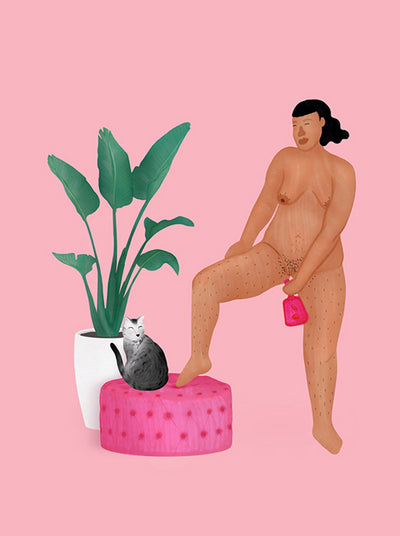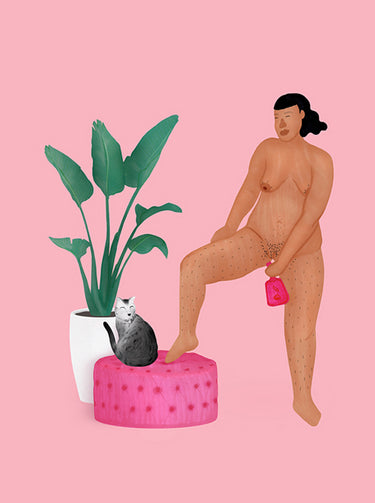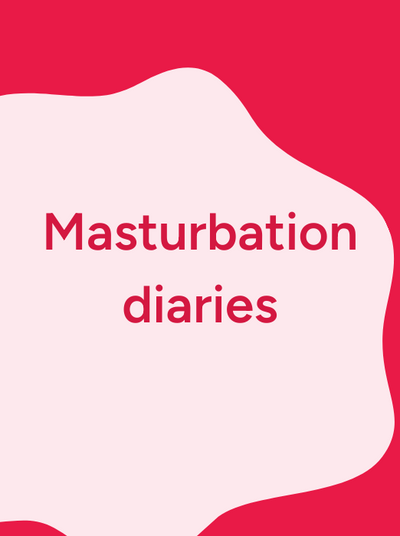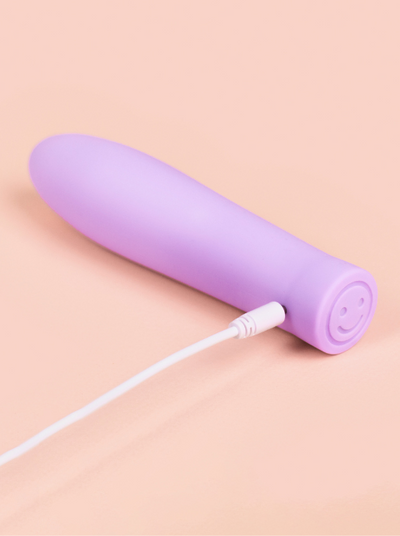Header image credits: Smile Makers exclusive collaboration with @PinkBits
It is likely that you have one of three types of reactions to your vulva (the visible part of your reproductive organs below the belt; comprised of your mons, labia, clitoris and vaginal entrance).
These reactions might be plain indifference, awe and curiosity (high fives to you) or disgust *womp womp* … but we get it!
We totally understand that self-love isn’t an overnight process and that feeling great about your body at all times isn’t probable for most of us. Especially when it comes to our genitalia.
But we have to resist ignoring or shaming parts of ourselves under the guise that it’s taboo or shameful.All vulvas are unique.
Traditional Western pornography (where most vulva owners would have first seen a vulva up close that wasn’t our own) distorts what genitals look like. Yes, you can photoshop a video!
The truth is vulvas are as vast in appearance as faces. Labia is often asymmetric and vary in length, while some clitoris’ glans are barely visible while for others it will be a lot longer and prominent. There is no “perfect” way that vulvas should look and acknowledging that your vulva is completely unique is a really important thing to understand and keep reminding ourselves.
Lack of quality sex education is just as to blame for vulva-shame as porn’s fetishization of genitals. If we never learn to celebrate and love our bodies and its ability to experience pleasure, of course we will grow uneasy and confused about what things should be like.
Gynaecologists have shared that this vulva shame isn’t just affecting women’s view on their bodies, it can have fatal consequences for their health. As women admit to missing cervical screenings that could help detect early signs of cervical cancer, if they weren’t feeling good about their vulva’s appearance. Ungroomed pubic hair is often cited as a big reason for this!
Vulva pride - steps to make your vulva your BFF.
- Look at it - the best way to confront something you’re uncertain of? Just look at it head on! Find some time alone and using a hand mirror get to know your vulva visually.
- Cop a feel - It’s your body and no one will ever know your body the way you do so why not get completely familiar. Experiencing different textures of the labia. and vaginal entrance. if you have a smaller clitoris glans move back its hood and take a peek!
- Track your fluids - Even if you aren’t interested in getting pregnant understanding the different types of cervical fluid will tell you a lot about your hormones. From a young age vulva owners are told how not to get pregnant and when they decide to have a baby there is zero understanding about their cycle beyond their period! By keeping track you may start to notice changes in how your vulva looks and feels from week to week.
- Follow social accounts that make your feel good about your body! Feed yourself content that celebrates diversity and inclusion and REAL representations of what human beings look like!
- Seek out body and vulva positive artists such as Pink Bits!
- Masturbate with a vibrator – duh! Read on for why...
Vibrator use is linked with better gynaecological health awareness.
A national study of the Prevalence and Characteristics of Vibrator Use by Women in the United States found a significant positive correlation between women who use vibrators and those who have had recent gynaecological examinations. They also found these women more likely to perform self-examinations.
“It may be that women who are comfortable using vibrators are also women who are comfortable looking at or touching their genitals for health reasons, or having their genitals viewed and touched as part of gynaecological exam.”
In fact vibrator users were significantly more likely to engage in two specific health-promoting behaviors as compared to nonusers:
(i) having had a gynecological exam in the previous year; and
(ii) having looked closely at their genitals in the previous month.“
Another theory Is that “it may be that novelty or sexual pleasure motivates women to use a vibrator and that the experience of using a vibrator helps women to feel more comfortable with their genitals and gynaecologic exams.”
If self-pleasure is something you are unsure of or have put off, start by looking and getting to know your vulva for the sake of your health. You will be able to spot if things change and this can equip you better to share vital information with a health professional should you ever need to.











